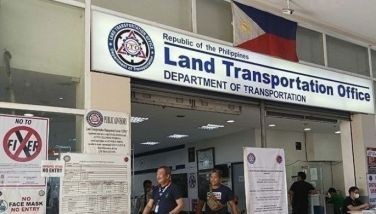Smart, Globe see surge in mobile money payments
MANILA, Philippines - Leading mobile phone service providers Smart Communications and Globe Telecom both expect their respective mobile money payment businesses to expand significantly due to the growing pervasiveness of cellular phones among Filipinos.
Smart expects that from about $30 million to $45 million (about P13 billion) per month last year, Smart Money mobile transactions (excluding purchase of air time and cellphone load) will grow 10 to 15 percent this year.
As this developed, Globe president and CEO Ernest Cu said there will come a time when their mobile commerce service GCash and its counterpart Smart Money will have to “interconnect.”
“We cannot have two kinds of currency. Later on, there will be a need to interconnect. It should be one kind of mobile money currency but interchangeable,” he said in an interview.
During yesterday’s Mobile Money Transfer Asia Pacific Conference, Smart chief wireless advisor Orlando Vea said while the transactions processed over their mobile financial services platform (Smart Money) appears significant, they have barely scratched the surface of mobile money’s true potential.
He said Smart is aiming to bring mobile money across industries by leveraging on the strong ties that they have with affiliated infrastructure and utility companies.
“In the next few years, we will embed mobile money services into other industries beyond banking and financial services,” Vea said.
He said Smart, as a member of the Philippine Long Distance Telephone Co. (PLDT) and Metro Pacific group, is uniquely positioning in the Philippines and globally to extend communication services, including mobile payments to other industries.
“Smart’s affiliate companies in this group include, among others, the major power distribution company (Manila Electric Co.), one of two major water distribution companies (Maynilad), the largest tollways operator (Manila North Tollways Corp.), one of the largest television and satellite broadcast networks (TV5 and Cignal), and the biggest hospital chain (which includes Makati Medical Center). Mobile payments will be a key enabler and enhancer of business for these companies,” he said.
He added that prepaid electricity and water are among the applications they are now developing.
Smart Money users in the Philippines at present can pay at over 25,000 Mastercard merchants and withdraw cash from over 9,000 bank ATMs all over the country. They can also encash mobile money through “money-in, money-out” centers which include pawnshop chains like Cebuana Lhullier and Palawan Pawnshop and networks of retail stores like Hapinoy Stores.
“And key to our mobile money ecosystem is the network of more than 1.3 million Smart load retailers all over the country who are users of Smart Money and also function as merchants,” he said.
For his part, Cu said the inherent telco strengths in distribution and mass marketing coupled with enhancement capabilities in banking and microfinance can empower the creation of strong fundamentals that will drive growth of the mobile money industry.
He also noted that Banko, the mobile microfinance bank created by Globe, Ayala and BPI, disbursed P1 billion in loans last year to about two million customers with 30 microfinance institutions as partners. The loans are from P500 to P1,000 per client on the average.
Banko, which has five branches at present, has also commenced retail pilot lending. “While before, Banko was engaged only in wholesale lending, it is now undertaking both wholesale and retail lending,” Cu revealed.
Also yesterday, Edgar Dunn & Co. managing director Lance Blockley revealed the results of a recent study conducted among 600 payment professionals worldwide.
At present, he said mobile products rank low in importance for today’s payment transaction landscape, with 85 percent of respondents worldwide saying credit cards still rank high in terms of importance.
But among the respondents from Asia, 48 percent believe that mobile transfers will experience the greatest growth in importance over the next five years.
In terms of payment chancels, 59 percent of the respondents from Asia said mobile is important.
The survey also revealed that smartphones will drive growth in mobile payments channel but basic phones will still play a key role in the Asian region. It also disclosed that network operators/telcos are expected to play a key role and are becoming more influential than card issuers and other payment schemes.
According to the same survey, the ubiquity of mobile telephony drives the mobile payment channel. In terms of importance, the ability to make mobile P2P (person-to-person) payments and the ability to make mobile international remittances rank high.
Blockley said Asia has become a leading region in the world for mobile payments, and that in the Philippines, both GCash and Smart Money have experienced significant adoption rates.
Another survey by EDC showed that the Philippines, China and the US are the three largest markets for mobile money transfers in 2010. The same EDC survey revealed that mobile money transfers will experience tremendous growth over the next six years. By 2016, total mobile money transactions will reach $126 billion, with Southeast Asia accounting for $30.1 billion.
- Latest
- Trending
































